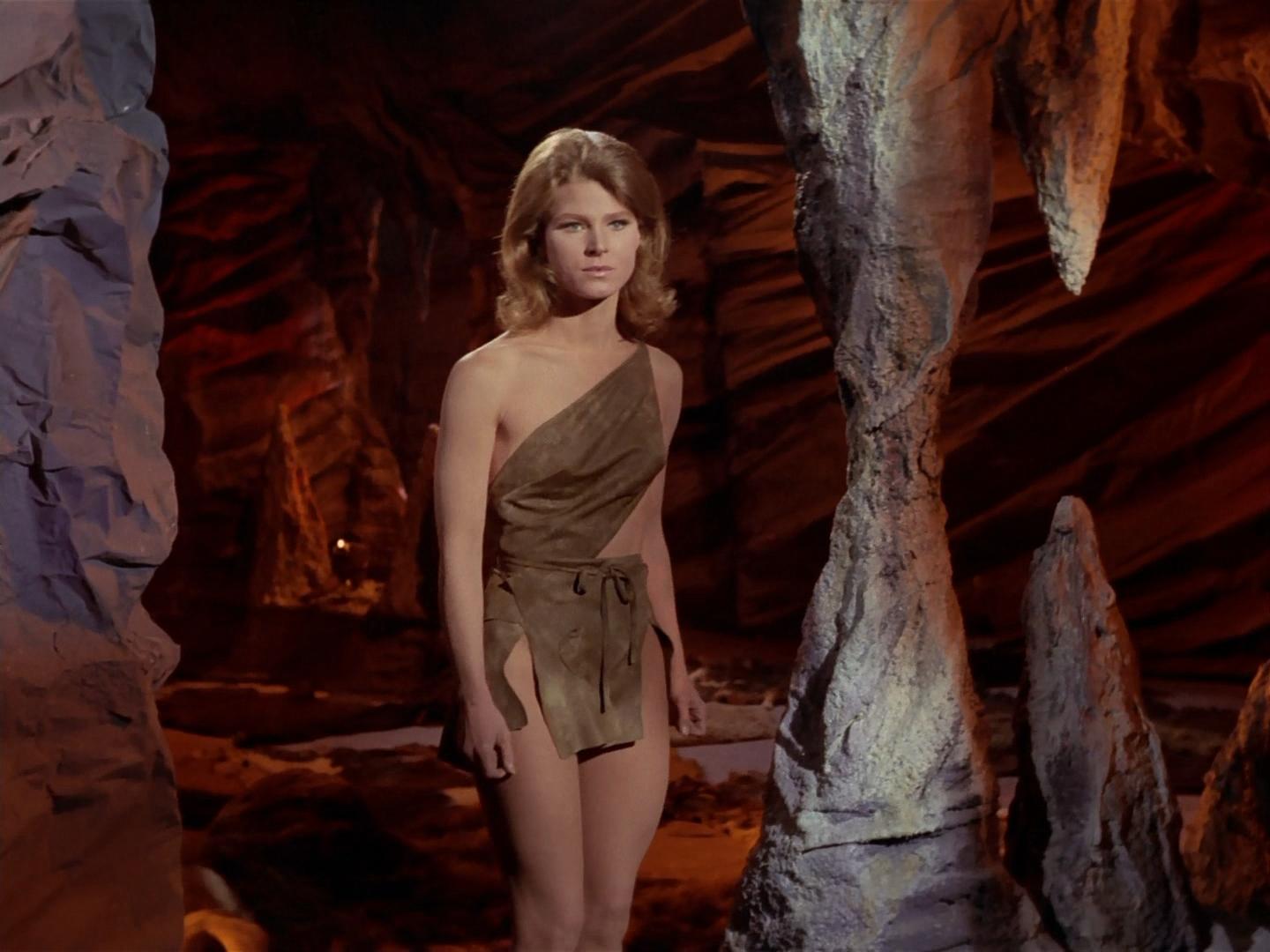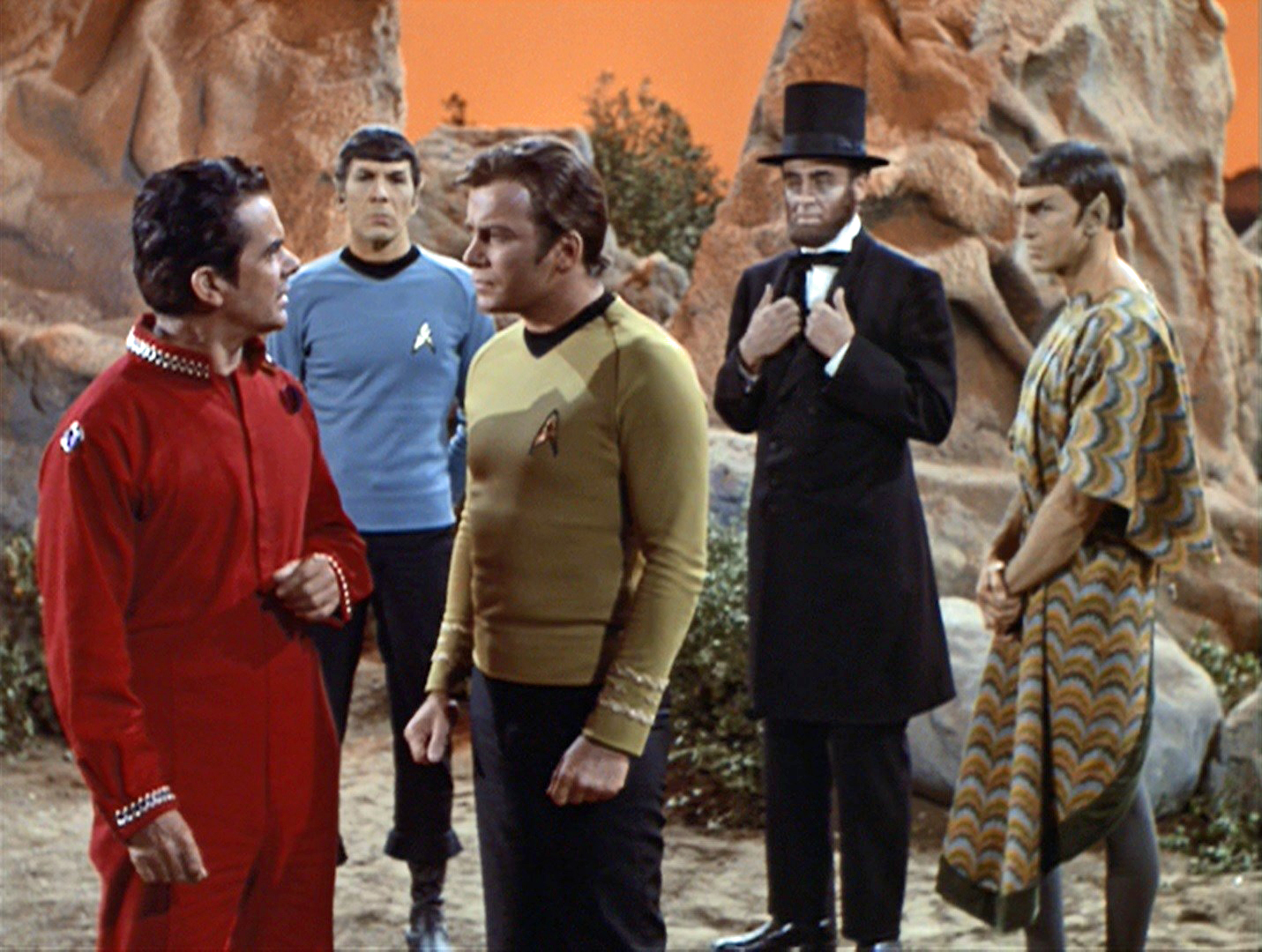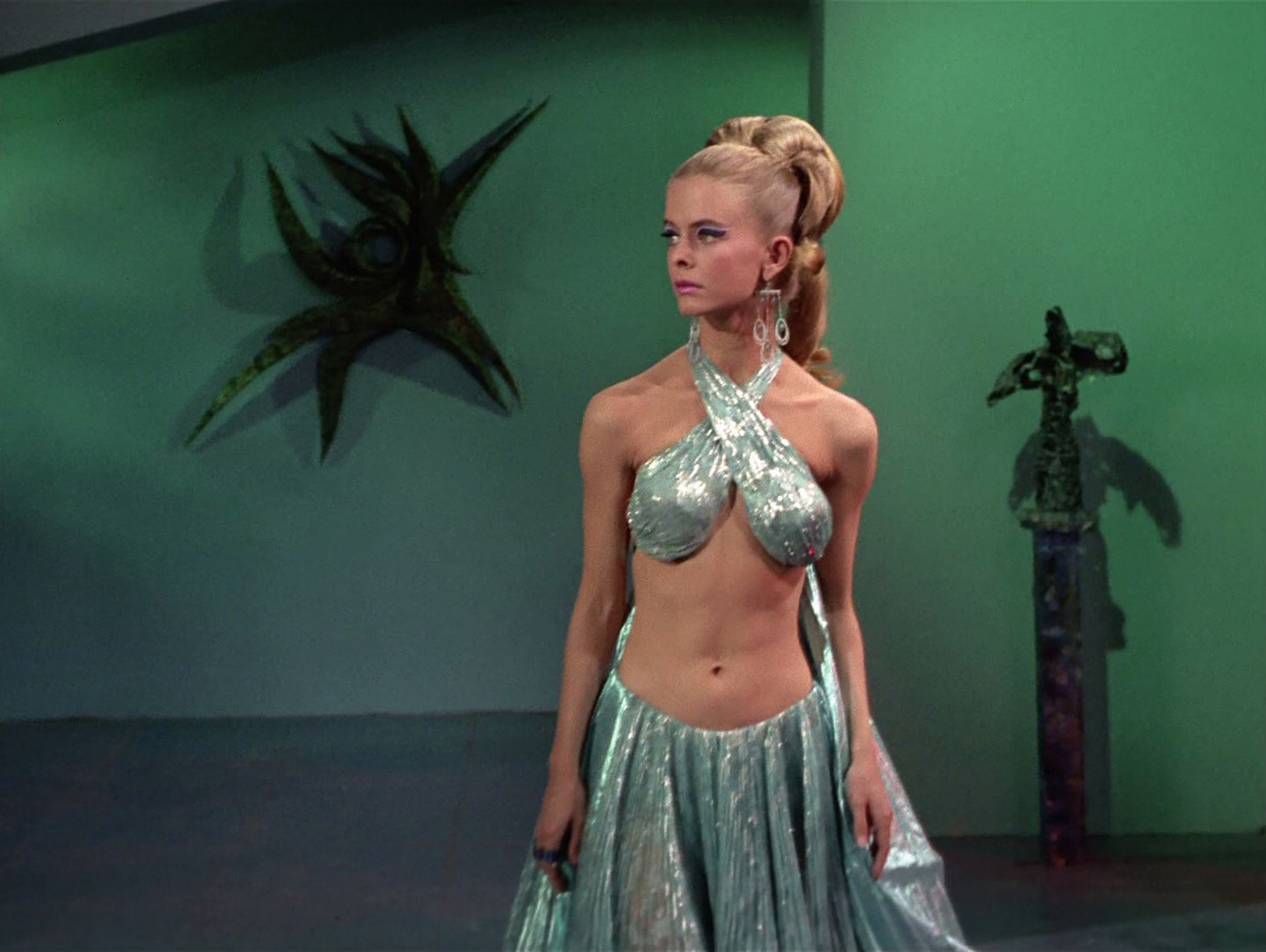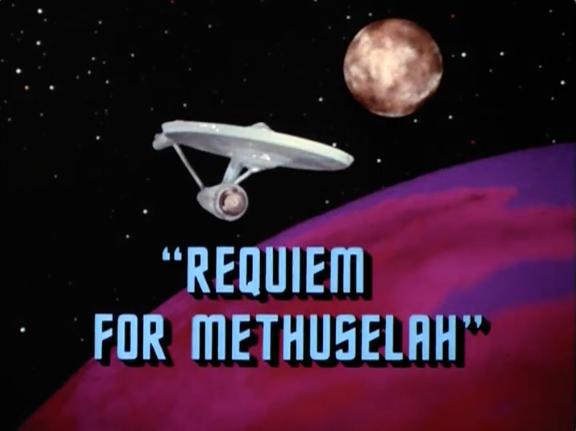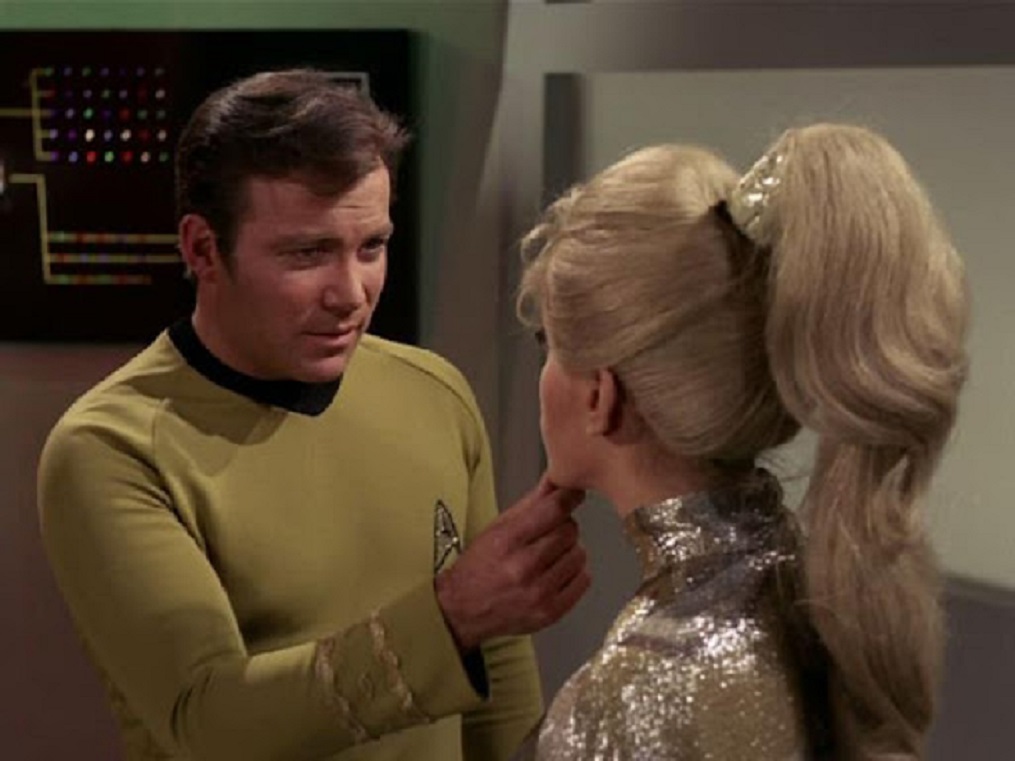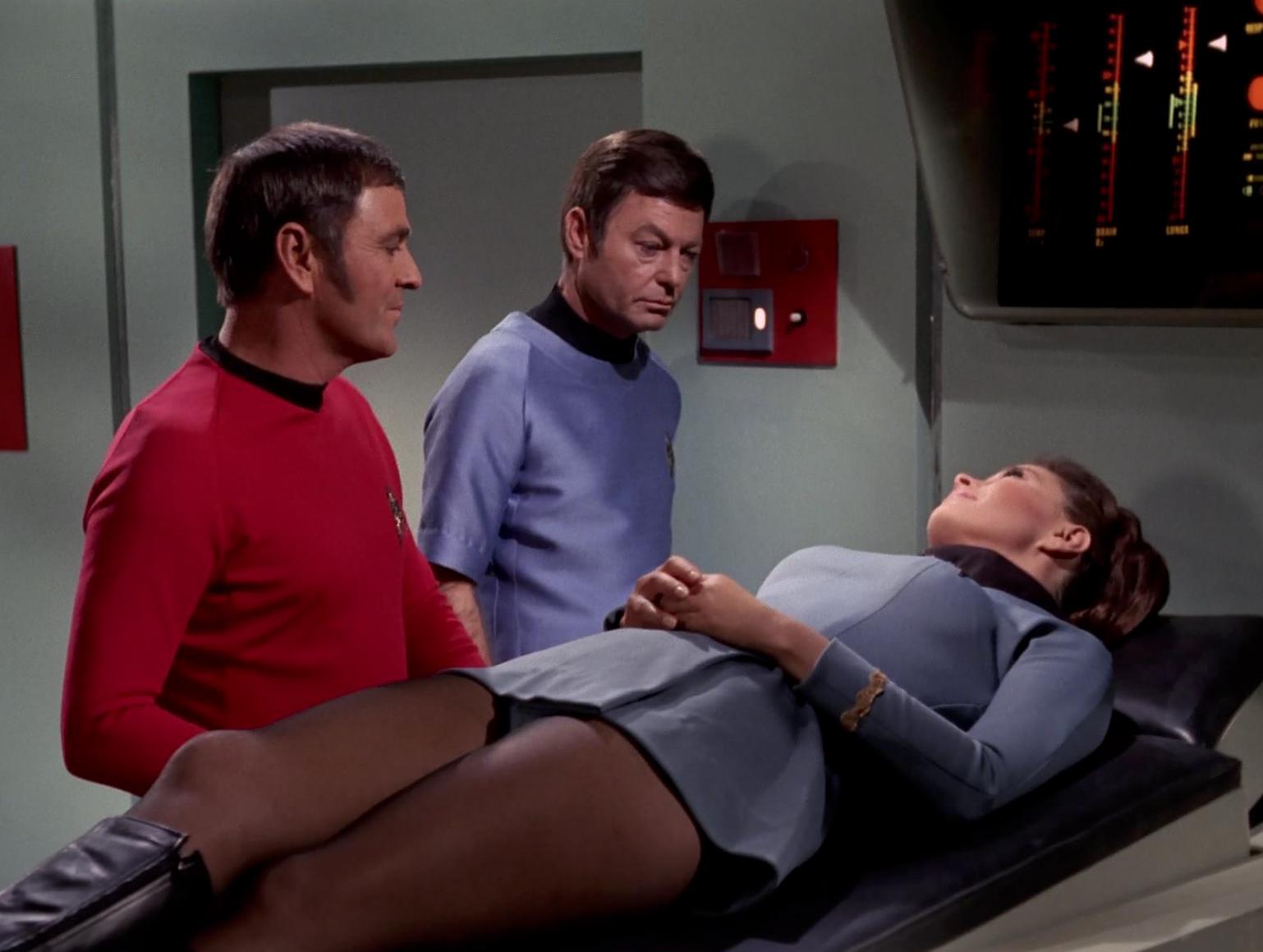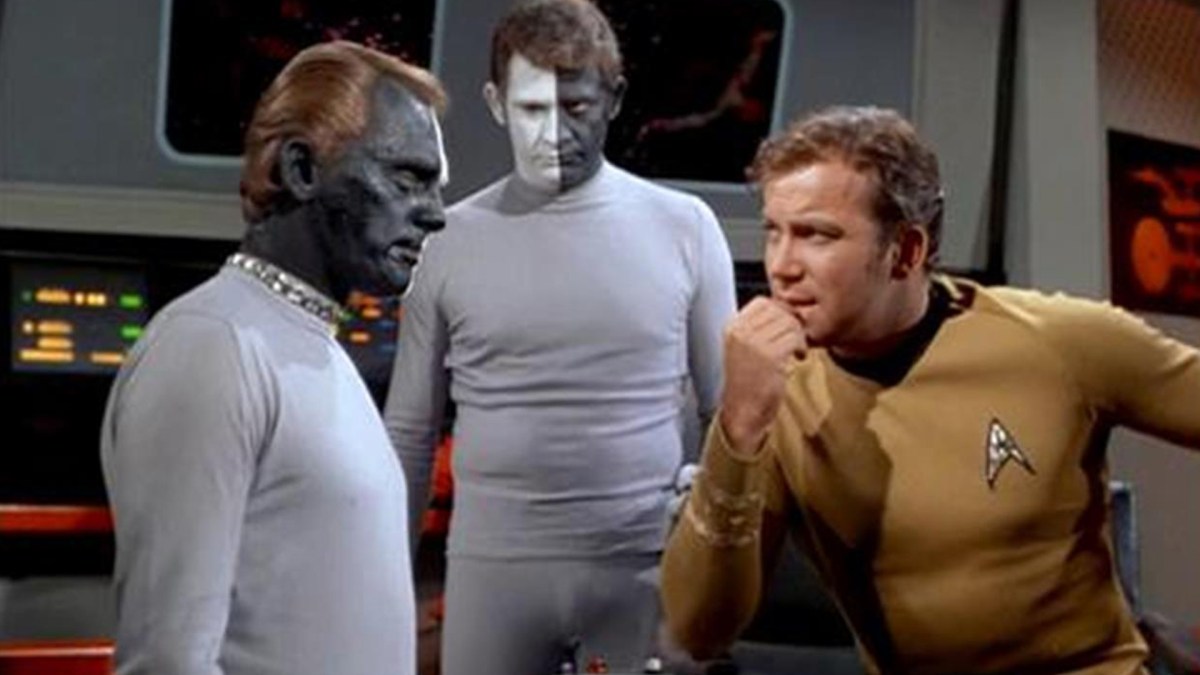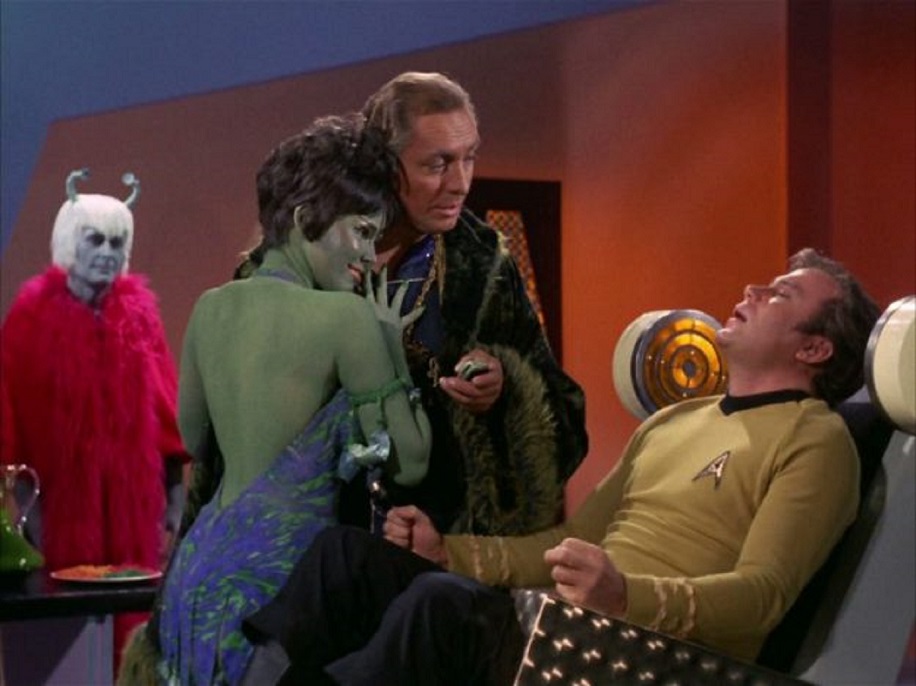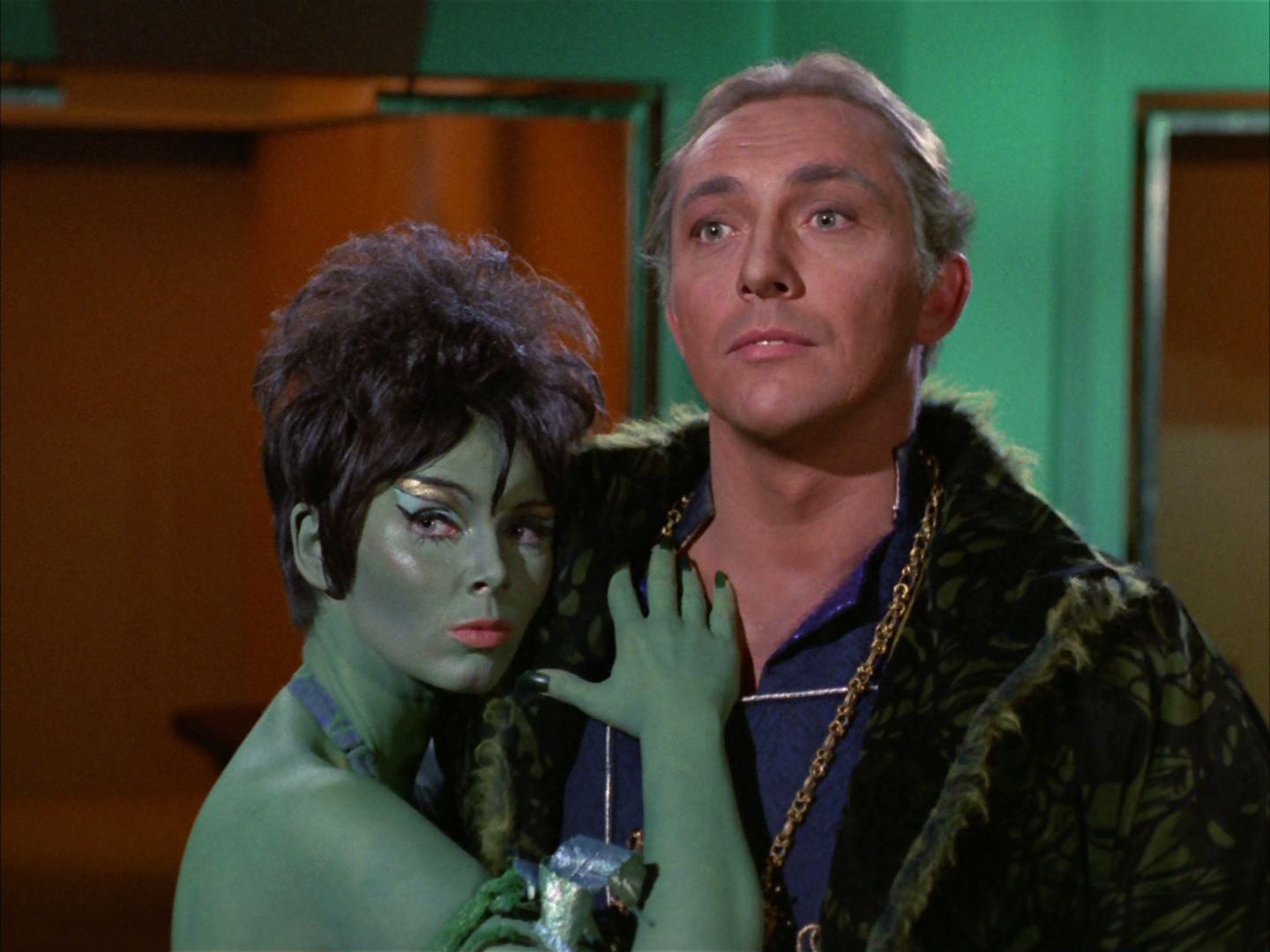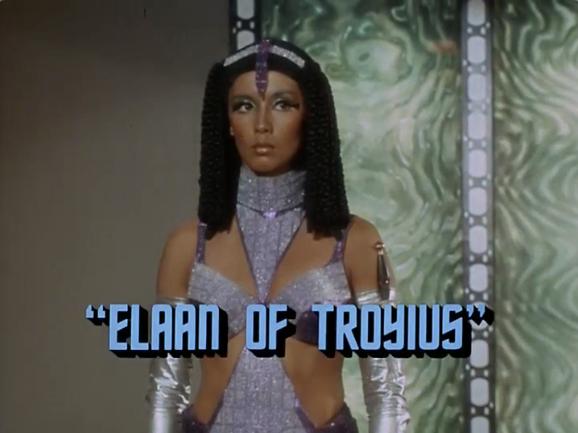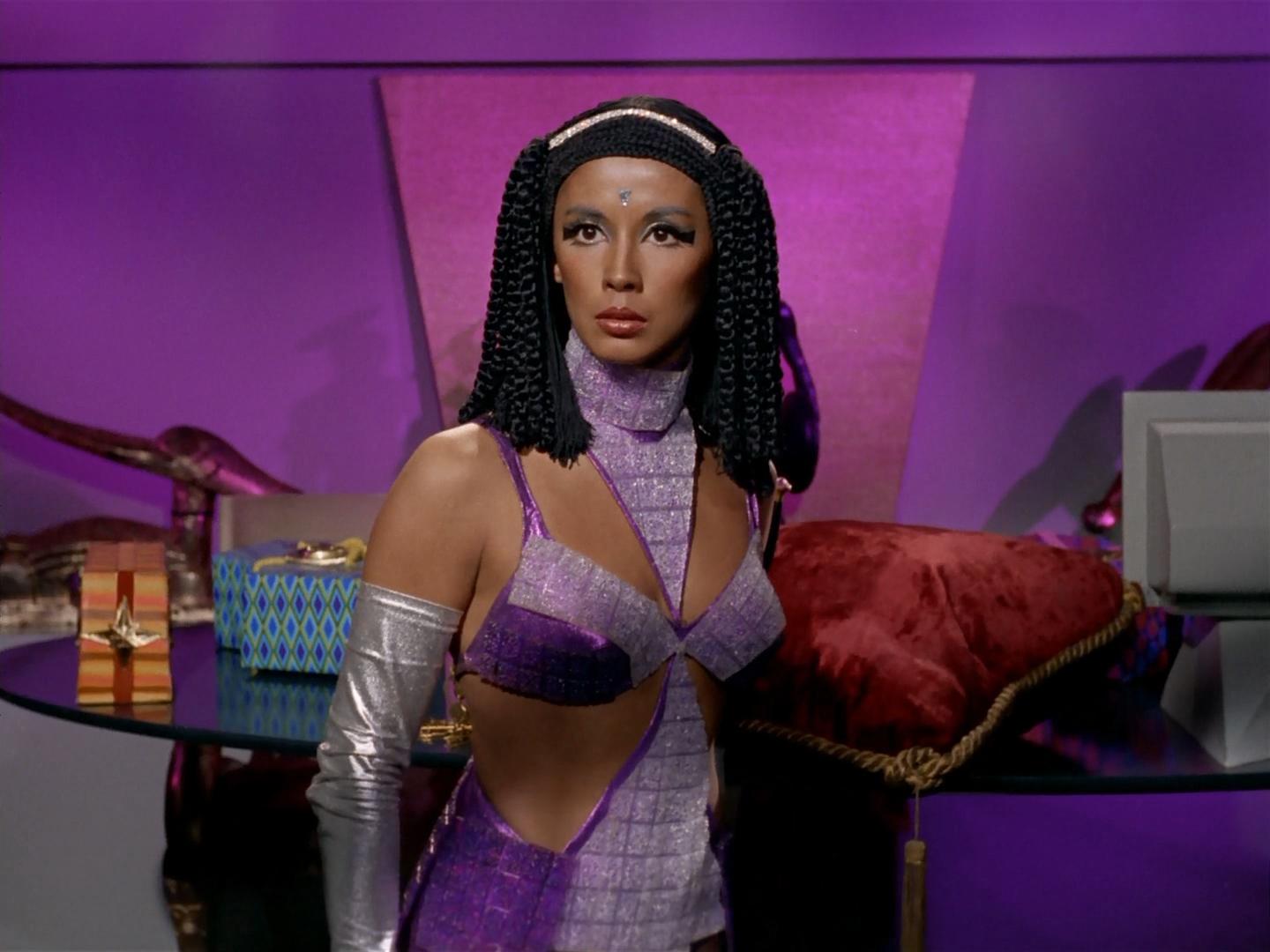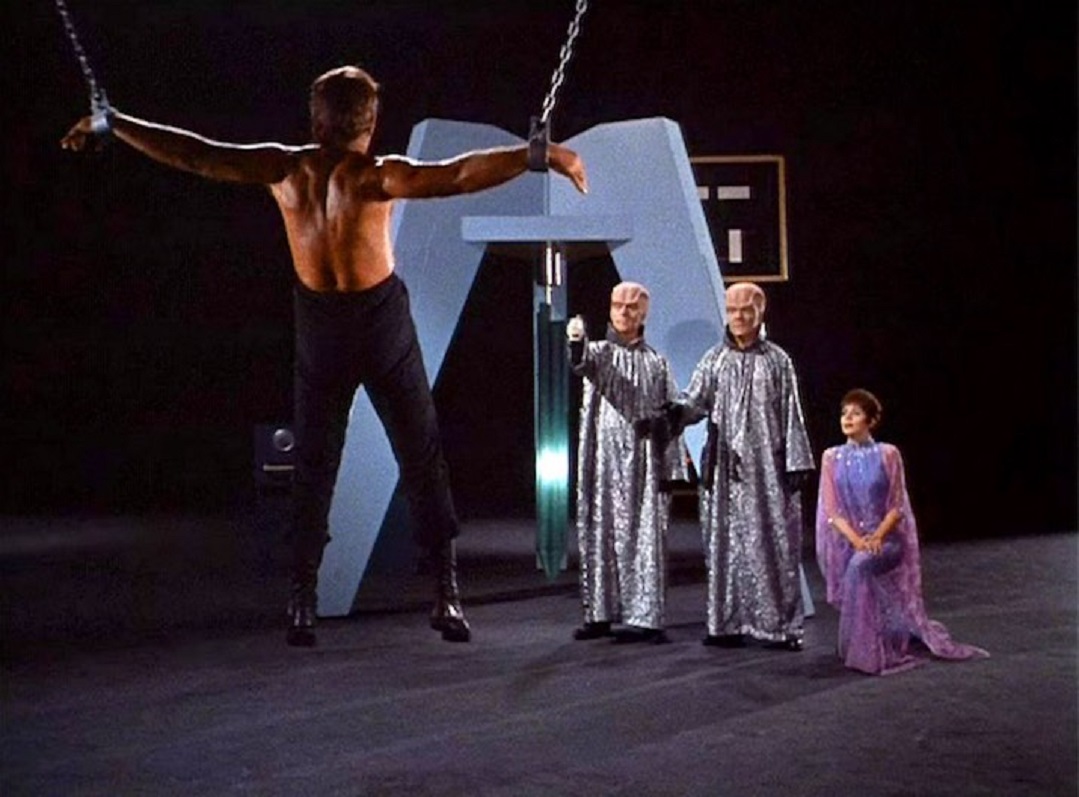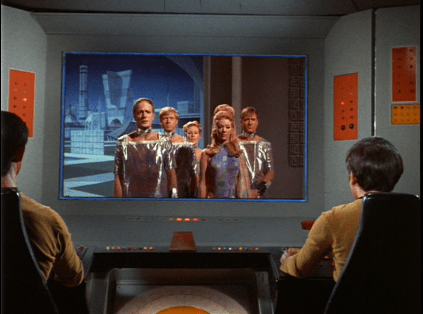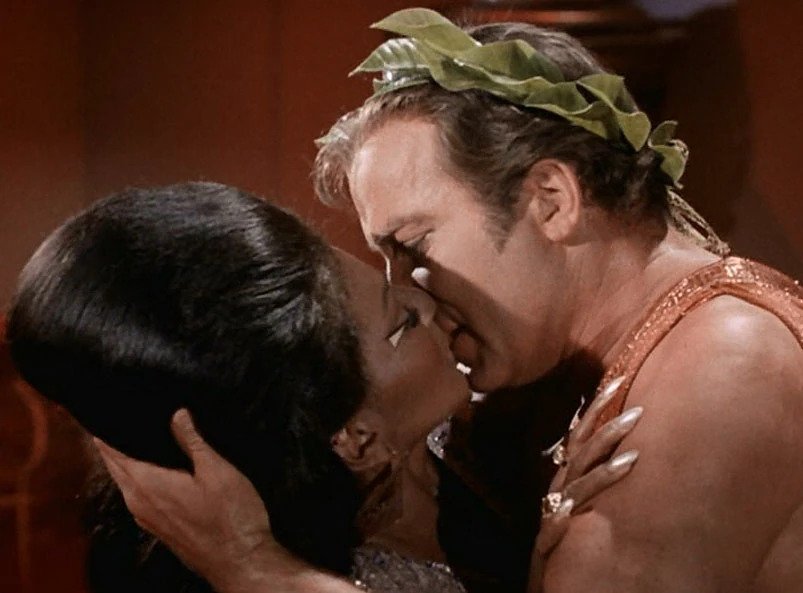★★★1/2 June 3, 1969 Season 3 Episode 24
If you want to see where we are…and you missed a few…HERE is a list of the episodes in my index located at the top of my blog.
This show was written by Gene Roddenberry and Arthur Singer
This is IT! The last episode of the last season. Because the original series was canceled instead of coming to a natural end, and the idea of a series finale was not as popular in the 1960s, “Turnabout Intruder” was close to a normal episode and did not have the “finale” touches. The remastered version of “Turnabout Intruder” ended with the Enterprise flying toward a colorful nebula, to artistically signify the episode as being the last of the original series.
First of all, I want to thank all of you for reading all of these posts or just dropping back by once in a while. I know I narrow my audience doing these television shows so I am so thankful that some of you who really never watched it jumped in and I hope some of you come away watching a few of them. Some of you like Lisa, Obbverse, and Liam re-watched the shows as we went along and I thank you for it and the rest that did.
This episode is basically “Freaky Friday” in space.
Kirk’s body gets kidnapped by his former lover Janice Lester (played by Sandra Smith) who has gone jealously insane over the fact that Starfleet apparently doesn’t allow women captains (Roddenberry regretted this in the script). While the script may have been intended as a social commentary on the 1960s, it doesn’t quite work for a Star Trek series that was supposedly set in the 23rd century.
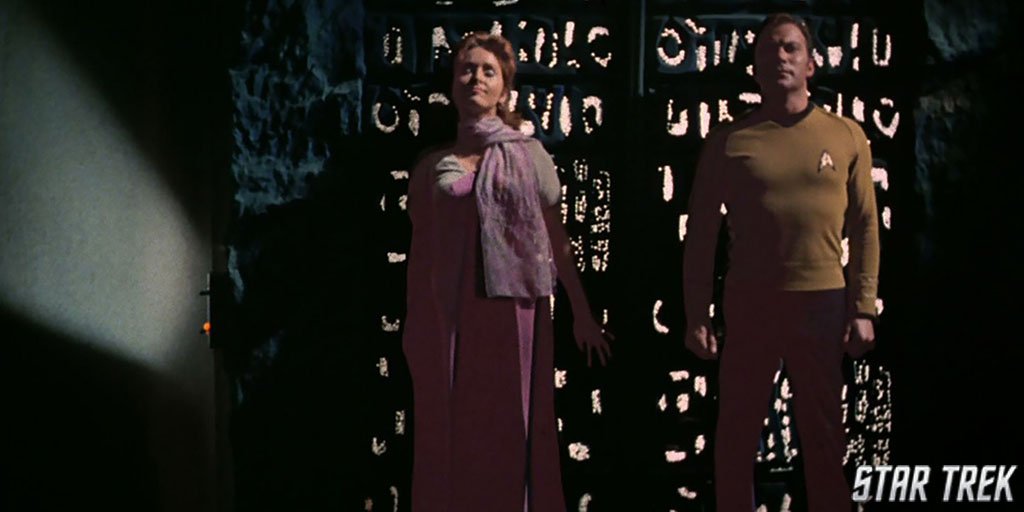
Surely by then, women would have risen up the ranks to become captains of starships! While it seems implausible that Kirk would allow his body to be kidnapped on Camus II by an alien device, this cannot be dismissed outright. As Spock rightly notes, the Enterprise has been to many new places and witnessed many strange events. Moreover, Kirk was once cloned in ‘What Are Little Girls Made of?’ and even split into two in ‘The Enemy Within.’
I think Shatner does a fair acting job in this one. He is much more emotional because Lester is in his body. I think this one is an average episode of the third season. Not one of the greats but not bad.
From IMDB:
William Shatner had a severe case of ‘flu’ during filming of this episode. At one point, he had to lift Sandra Smith in his arms, carry her to a couch and put her on it: during the first take, he got as far as the couch and dropped her. Fortunately, it was well padded, and Smith bounced several times; according to Joanie Winston, who was visiting the set, Shatner looked down at Smith and said, “You know I love you, baby, but you’ve got to lose about six inches off that ass.”
Leonard Nimoy is the only actor to appear in every episode of the series. William Shatner appeared in every episode with the exception of the first pilot, The Cage (1966).
Gene Roddenberry regretted the line about the Federation supposedly not allowing female captains, as he felt it was sexist.
The transposition sequence was the last footage shot for The Original Series.
This episode is subtly referenced in Legacy (1990). Jean-Luc Picard mentions that they are bypassing an archaeological survey on Camus II, the same planet that this episode begins on. This was mentioned because, with the airing of its 80th episode “Legacy”, Star Trek: The Next Generation officially became longer than TOS.
Leonard Nimoy (Spock) and Majel Barrett (Nurse Christine Chapel and Number One) are the only actors to appear in both the series finale and the first pilot The Cage (1966).
Nurse Chapel’s (Majel Barrett) hair color is brown for this episode, not its usual blonde color.
This episode was originally scheduled for broadcast on March 28, 1969. Special network coverage of the death of Dwight D. Eisenhower pre-empted it, and it didn’t air until June 3.
Lieutenant Galloway reappears in this episode, despite being killed by Ronald Tracey in The Omega Glory (1968). He was credited as Galloway (misspelled as “Galoway”) even though actor David L. Ross had been recast as Lieutenant Johnson in Day of the Dove (1968) after the character of Galloway was killed off.
Although this was the last episode of the Original Series to be filmed and aired, this episode has a lower stardate than the previous episode, All Our Yesterdays (1969).
The production crew nicknamed this episode “Captain Kirk: Space Queen”.
Though her voice is muffled, Dr. Lester protests to Dr. Coleman, “Go to Hell!” a rare case of a “swear” sneaking past the network censors.
According to Harry Landers, he was very fatigued during this episode because he had just had his upper right lung removed due to an infection. He wanted to turn the role down but did it as a favor to producer Fred Freiberger.
After two years on the series, Roger Holloway finally gets to speak dialogue, all of two words. His character’s name (Lemli) was the same as William Shatner’s license plate at the time, a mixture of his daughters’ (Leslie, Melanie, Lisabeth) names.
Summary
On the planet Camus II, Kirk meets his old flame, Janice Lester, who is supposedly dying of radiation poisoning. She is a woman scorned and is out to get her revenge on Kirk with whom she was in love many years ago. She has discovered an alien process that will allow her to transfer her essence into Kirk’s body and vice versa. Returning to the Enterprise in Kirk’s body, she now has command of the Enterprise. Kirk on the other hand is now in Lester’s body and can get no one to believe that he is really Kirk. It soon becomes obvious that Lester is incapable of command, leading Spock to accept that she has, in fact, taken over Kirk’s body.
THANKS AGAIN! One final message…Live Long and Prosper.
CAST
William Shatner … Captain James Tiberius ‘Jim’ Kirk
Leonard Nimoy … Mister Spock
DeForest Kelley … Dr. McCoy
Sandra Smith … Janice Lester
Harry Landers … Dr. Coleman
James Doohan … Scott
George Takei … Sulu
Walter Koenig … Chekov
Majel Barrett … Nurse Chapel
Barbara Baldavin … Communications Officer
David L. Ross … Lt. Galoway
John Boyer … Guard
Tom Anfinsen … Medical Technician (uncredited)
Bill Blackburn … Lieutenant Hadley (uncredited)
James Drake … Security Guard (uncredited)
Roger Holloway … Lt. Lemli (uncredited)




